Khabar Magazine. Feb 2022 print.
If you have driven down Peachtree Road near the Ashford Dunwoody Road intersection, you may have seen random neon signs for Indian or Bangladeshi restaurants. An old stand-alone building here has changed hands a number of times, introducing a few tried-and-failed South Asian restaurants. But Ruchi is the first that has managed to survive and thrive, making it through a global pandemic.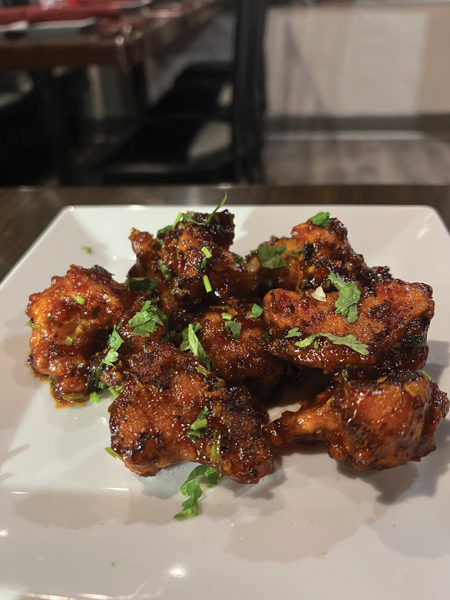
Bangladeshi immigrants from the northeastern city of Sylhet Shajon Miah, along with his son, Amit Shapta opened Ruchi Bangladeshi Restaurant in 2017. Miah has worked as a chef at Indian restaurants in London, California, and metro Atlanta. They knew the location had been termed “doomed” but they took a leap of faith seeing how the neighborhood of Chamblee- Brookhaven was growing and opened their first 45-seater fullservice restaurant.
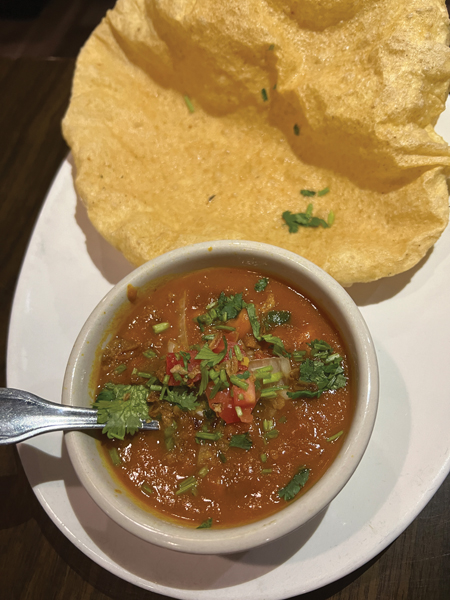
Fun fact: eight out of ten Indian restaurants in the U.K. are said to be of Bangladeshi ownership. The national dish of Britain since 2001— chicken tikka masala—was invented by Sylhetis cooks who “converted the unadventurous British palates” notes historian Lizzie Collingham in her book, Curry: A Biography.
Inside Ruchi, it seems nothing has changed since the one-story building was first constructed. Large wall mirrors, bright television sets, and booths with black cushions make you feel like you are in a no-frills intown ’80s café. Even the background music is American lounge, and there are hardly any references to the restaurant’s ethnicity.
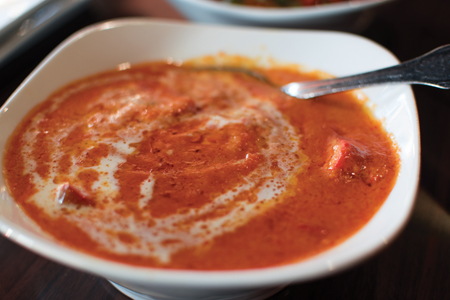
Except for the food that is—which lives up to its name: ruchi means taste in Bangla. The extensive menu boasts a large selection of flavors from the subcontinent. There is authentic Bangladeshi fare as well as Indo-Chinese and Indian dishes spelled out in Bangla. You can spend hours trying to decide what to order and the minimal descriptions may not be helpful for those who are not familiar with the cuisine.
Bangladeshi cuisine is largely influenced by Mughlai cuisine that boasts of rich and aromatic kormas, kebabs, biryanis, and stuffed breads. There are also influences from India, Armenia, and Central Asia.
As soon as I sit down, my friendly young Indian waiter brings out a basket of thin pappor, or papad as we know it, with spicy mint and tamarind chutneys. He is happy to make recommendations—tandoori dishes, lamb specials, and pakoras are a must. Also, anything can be customized to be vegan or vegetarian, he informs me.
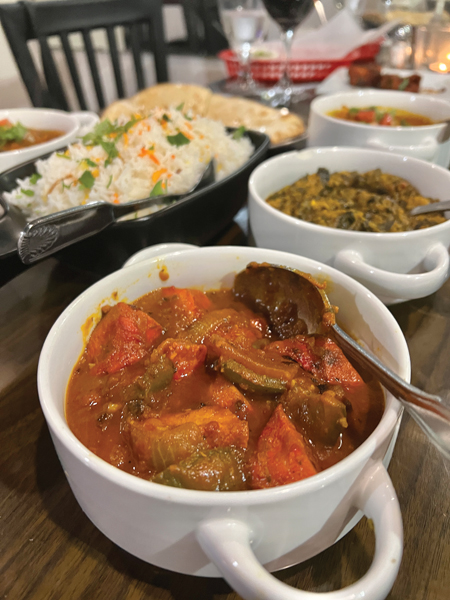
The kopi (cauliflower) pakora appetizer that he suggested is actually quite good. Battered in corn starch and sautéed with ginger, garlic, and soy, the florets are sweet and spicy like an Indo-Chinese manchurian. The shrimp puri starter comes with a not-too-oily, large, and fluffy puri and a bowl of diced pieces of shrimp in a mild tomato, onion, and bell pepper gravy for dipping.
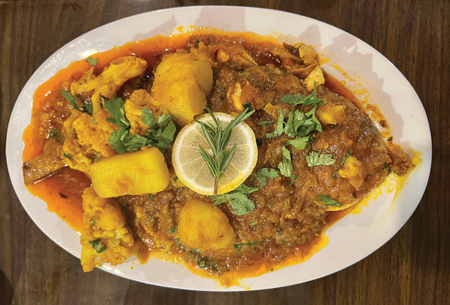
There are lots of options for vegetarians and meat eaters. You can customize a variety of sauces— tikka moshola, korai, vindaloo, etc.—with a choice of protein: halal chicken, lamb, goat, tilapia, salmon, or shrimp.
Piping hot grilled pieces of chicken breast in onions and bell peppers are served as chicken tikka jalfrezi. The sauce has a tangy and spicy flavor of vinegar, tomato, and green chili. Naga morich is an even spicier Bangladeshi curry made with pickled green chili known as naga. The restaurant grows its own naga chili peppers (they have plants in the back, seasonally), and boils them to make a paste. Ask for a side of naga sauce if you desire more heat.
If you like seafood, definitely order rupchanda, a whole bone-in silver pomfret fish pan-fried and topped with a homestyle curry of onion, cauliflower, and potatoes.
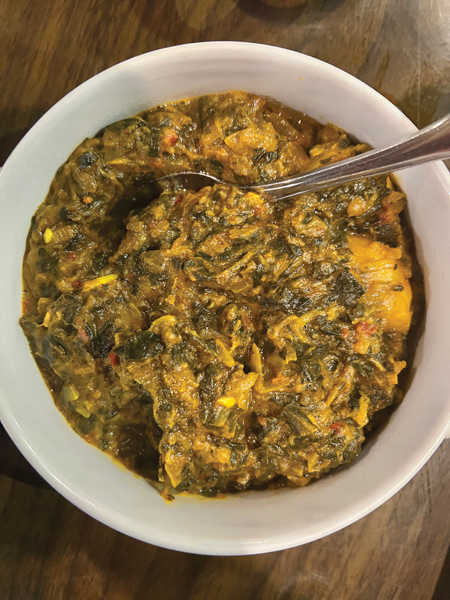
Shaak aloo, pieces of boiled potatoes with mashed spinach, roasted garlic, onion, and tomato sauce, is delicately spiced. There are no added creams or butter, so it is light and nourishing. The chaana begoon is also an interesting combination of two dishes—chickpeas and green peas cooked in a hot sauce of roasted mashed eggplant and tomatoes. All dishes are served with a side of rice topped with cilantro and carrots, but if you are expecting long grain Basmati (even though the menu may say otherwise), you will be disappointed. The rice variety that is cultivated in Bengal (known as Gobindo Bhog) is mainly short grain, aromatic, and sticky. The breads—thick, doughy naan and crisp, dry chapati—are not great carb options either.
For dessert, try the homemade payesh (also listed as rice pudding and similar to phirni), a thick coconut milk and rice pudding, flavored with rose water, that is not overly rich or sweet. There’s a small selection of wine and Indian beer to go along with your meal.
If you are in the area during the day, Ruchi offers a thali special for lunch which includes a choice of any two dishes served with naan and a drink.
Overall, Ruchi offers uncompromising flavors and homestyle preparation with enough choices to satisfy every patron. There are many familiar dishes that you find on Indian menus, but they are cooked slightly differently. As long as you are not looking for an ambiance, you may enjoy venturing out of your comfort zone into a new flavor of the subcontinent.
~ Written for and published by Khabar Magazine. All rights reserved.